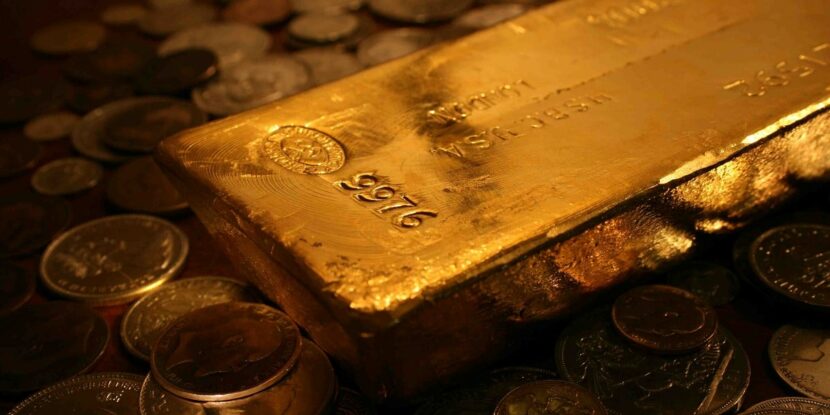Lazy economic pundits argue that a return to the gold standard is impossible because “there is not enough gold.” Fortunately for those who want wages as good as gold, this line of attack is completely Fake News.
Incurious economic reporters believe the following: since gold is a finite resource, if we make the dollar convertible to it, we will run out of gold.
It’s funny how pundits find a world where a dollar is redeemable for gold unimaginable, but they would find nothing unusual about redeeming a dollar bill for 4 copper and nickel alloy quarters at a bank.
True, the dollar is not backed by copper and nickel. It’s backed by “the full faith and credit of the United States.” While base metals (i.e. copper and nickel) do not produce signals to the monetary authorities as to when to inject more — or withdraw — currency, the transaction of converting a paper bill to metal tokens is metaphorically comparable to exchanging them for gold.
A return to the gold standard doesn’t mean you will be shopping in gold coins — just as you wouldn’t shop with quarters. Carrying around a bunch of heavy coins would be both impractical and unnecessary. Under a gold standard, you would continue to purchase goods with cash and a credit card.
Back when people could redeem their dollars — then called Gold Certificates rather than Federal Reserve Notes — for gold, monetary authorities found it necessary to keep the money stable in value by making continuous slight adjustments in its supply of currency to match demand. Maintaining gold-based money is less a function of a country’s gold holdings and more a function of how the value of the currency is maintained (so it’s neither getting more or less valuable). As Steve Forbes (whom this columnist is affiliated with via the Committee to Unleash Prosperity) wrote:
Great Britain, which was the de facto manager of the classical gold standard until it was destroyed by the Great War in 1914, operated with a small amount of gold — as little as 2% of the world supply. In the late 1940s, in contrast, the U.S. had almost 50% of the world supply, around 700 million ounces. Yet unlike the pre-WWI Brits, we didn’t know what we were doing and blew up the system in 1971, even though the U.S. had experienced one of its most prosperous eras ever under Bretton Woods.
As the historical evidence shows, the gold standard can be run effectively with very little gold. Gold is the “thermostat” signaling the monetary authorities as to when they are meeting, exceeding, or failing to meet the demand for currency in the economy. Returning to a gold standard is therefore about the “quality” of our money rather than the “quantity” of it.
The decline in the “quality” of our money was perfectly summarized by monetary scholar Ralph Benko (whom this columnist is also affiliated with via the Committee to Unleash Prosperity). Writing for the Lehrman Institute’s TheGoldStandardNow project, Benko noted:
When my father, born in 1910, was a young man the circulating currency said “gold certificate.” He could walk into any bank with a $20 bill, tender that, and walk out with a $20 gold coin weighing just about an ounce. That’s a gold dollar.
…
When I, born in 1952, was a young man the dollar bill said “silver certificate.” On occasions such as birthdays I might be given a handful of silver dollars rather than dollar bills.
…
My own children have to make do with “Federal Reserve Notes.” Savant James Grant wittily has dubbed this, “faith-based money,” backed, as it is, only by “the full faith and credit of the United States.”
…
So a progression, or more aptly, a regression can be noted: from the gold dollar, to the silver dollar, to the base metal dollar. Metaphorically it is almost a kind of reverse alchemy. This represents a debasement of the standard. The value of the dollar has eroded by some 95% from the day my father was born until today.
The monetary “regression” Benko observes would surely please Vladimir Lenin, who has been quoted as saying “the best way to destroy the capitalist system [is] to debauch the currency.” Even lazy pundits should instinctively recognize that the massive currency devaluation of the last century is not without consequence.
Ending the fluctuation in the value of the dollar is essential to restoring economic growth, job creation, and equitable prosperity. “Faith-based” money — money backed only by “the full faith and credit of the United States” — is no substitute for money defined by and legally convertible to gold, as was the case when thirteen tiny States united and grew into the world’s economic superpower.
Photo credit: Bullion Vault via Flickr, CC BY-ND 2.0


